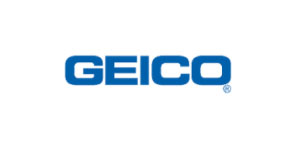Dealing with water damage cleanup can be a daunting task. It’s crucial to approach the situation with caution and avoid common mistakes that could exacerbate the damage or put your health at risk. In this section, we will highlight the key mistakes to avoid when dealing with water damage cleanup, ensuring that you can effectively protect your home and your well-being.
Key Takeaways:
- Understanding common mistakes in water damage cleanup is vital for successful restoration.
- Assess the situation before taking any action to determine the extent of the damage and identify potential hazards.
- Timely response and immediate action are crucial to prevent further damage and minimize potential consequences.
- DIY remediation can be risky, and seeking professional guidance is recommended for effective restoration.
- Proper drying and dehumidification are essential to prevent mold growth and structural damage.
Assess the Situation Before Taking Action
Before embarking on the water damage cleanup process, it is crucial to assess the extent of the damage and evaluate the situation carefully. This assessment will help you determine the necessary steps to take, identify the source of the water damage, and recognize any potential hazards that may be present.
To properly assess water damage, begin by examining the affected area. Look for visible signs such as discoloration, warping, or mold growth. Pay attention to the flooring, walls, ceilings, and any personal belongings that may have been exposed to water.
Next, consider the source of the water damage. Was it caused by a burst pipe, a leaking roof, or a flooded basement? Understanding the origin of the damage will help you address the root cause and prevent further issues.
Additionally, assess the category and class of water damage. Water damage is typically categorized into three levels based on its level of contamination:
- Clean water: This category refers to water that comes from a clean source, such as a broken pipe or overflowing sink.
- Gray water: This category includes water that may contain some contaminants, such as from appliances or toilets.
- Black water: This category represents highly contaminated water, such as sewage backup or floodwater. It poses a significant health risk and requires professional assistance.
Furthermore, understanding the class of water damage is essential in determining the level of drying and restoration required:
- Class 1: This class indicates minimal water absorption and evaporation, affecting only a small area.
- Class 2: This class suggests a larger area with moderate to severe water absorption and damage.
- Class 3: This class signifies the most extensive level of water absorption, saturating ceilings, walls, and floors.
- Class 4: This class applies to specialty materials with deep saturation, requiring specialized drying techniques.
A comprehensive assessment will help you prioritize the necessary steps for water damage cleanup, whether it’s implementing immediate drying measures, removing contaminated materials, or seeking professional assistance for more severe cases.
Don’t Delay the Cleanup Process
When faced with water damage, immediate action is crucial for effective restoration. Delaying the cleanup process can lead to severe consequences and exacerbate the damage. Timely water damage cleanup is essential to prevent further structural issues, mold growth, and potential health hazards.
Why is it so important to take immediate action? Water damage can quickly spread and infiltrate various materials in your home, such as drywall, flooring, and furniture. As time passes, the moisture promotes mold and mildew growth, which can pose significant health risks to you and your family.
To initiate immediate action, here are the key steps you should follow:
- Assess the safety: Before entering the affected area, ensure that it is safe to do so. Turn off the power supply to avoid any electrical risks, and wear protective gear, such as gloves and masks, to guard against potential contaminants in the water.
- Stop the source: If possible, identify and stop the source of the water damage. This could be a burst pipe, a malfunctioning appliance, or a leaking roof. Taking prompt action to halt the water flow is essential to preventing further damage.
- Document the damage: Take photos or videos of the affected areas and any valuable items that have been impacted. This documentation will be useful for insurance claims and can help restoration professionals assess the extent of the damage.
- Remove standing water: Use a wet/dry vacuum or buckets to remove any standing water. Ensure thorough extraction to minimize moisture accumulation and prevent additional harm to structural components.
- Begin drying process: Open windows, turn on fans, and use dehumidifiers to promote air circulation and aid in drying out the affected areas. Remove any wet materials that are not salvageable, such as carpeting or damaged drywall.
By following these steps and not delaying the cleanup process, you can minimize the long-term effects of water damage and mitigate the risk of mold growth. Remember, time is of the essence, so take immediate action to protect your home and ensure a successful restoration.
Avoid DIY Remediation Without Professional Guidance
When faced with water damage, it can be tempting to take matters into your own hands and attempt a DIY restoration. However, it’s important to understand the risks involved and the potential mistakes that can arise from tackling water damage without professional guidance. By avoiding these DIY mistakes and seeking professional water damage restoration, you can ensure a safe and effective recovery process for your home.
One common DIY mistake is underestimating the extent of the damage. Water can seep into hidden areas, such as behind walls or underneath flooring, causing unseen structural damage or mold growth. Without proper training and equipment, it’s easy to overlook these hidden issues, leading to long-term problems that may be costly to repair.
Another risk of DIY water damage restoration is inadequate drying. Moisture can linger in your home, creating an ideal environment for mold and mildew to thrive. Improper drying techniques can result in lingering moisture that leads to mold growth, causing health hazards and further damage to your property. Professional restoration experts have the knowledge and equipment to effectively dry out your space and prevent mold growth.
Additionally, DIY restoration may not address the underlying cause of the water damage. Identifying and addressing the source of water intrusion is crucial to prevent future incidents. Professional water damage restoration specialists have the expertise to pinpoint the cause of the water damage and implement necessary repairs or preventative measures to ensure it doesn’t happen again.
By seeking professional guidance for water damage restoration, you can avoid these DIY mistakes and benefit from the expertise of trained professionals. They have the specialized knowledge, tools, and equipment to handle water damage effectively, minimizing the risk of further damage and ensuring a thorough and safe restoration process for your home.
Remember, when it comes to water damage restoration, don’t take chances with your property and your health. Consult professionals to ensure professional water damage restoration and to avoid the potential pitfalls of DIY remediation.
Continue to Section 5: Don’t Neglect Proper Drying and Dehumidification
Don’t Neglect Proper Drying and Dehumidification
Adequate drying and dehumidification are crucial steps in the water damage cleanup process. Neglecting these essential tasks can result in mold growth and structural damage, prolonging the restoration process and increasing the risk to your property and health.
When water damage occurs, it’s important to take immediate action to remove excess water and start the drying process. Here are some best practices to ensure effective drying and dehumidification:
- Remove standing water: Use a wet vacuum or mop to remove any visible water from the affected area. The quicker you are able to remove the water, the better chance you have of preventing further damage.
- Set up fans and ventilation: Increase air circulation in the space by setting up fans strategically to promote drying. Open windows and doors to allow fresh air to circulate, helping to reduce moisture levels.
- Use dehumidifiers: Dehumidifiers are essential in removing excess moisture from the air. Place dehumidifiers in the affected area to extract water vapor and accelerate the drying process.
- Monitor humidity levels: Use a hygrometer to measure the humidity levels in the affected area. Ideally, humidity levels should be below 50% to prevent mold growth. If necessary, continue running dehumidifiers until the desired humidity is achieved.
Preventing Mold Growth
Drying is crucial in preventing mold growth, as mold thrives in moist environments. By thoroughly drying out your property and controlling the humidity levels, you can significantly reduce the risk of mold development.
It’s important to note that if the water damage is extensive or involves contaminated water, it is best to seek professional assistance. Certified water damage restoration specialists have the expertise and tools to handle the drying and dehumidification process effectively.
Remember, neglecting proper drying and dehumidification can lead to long-term damage and health hazards. By following these best practices and seeking professional help when needed, you can minimize further complications and restore your property to its pre-damaged condition.
Conclusion
To effectively clean up and restore water damage, it’s vital to understand the common mistakes to avoid. By taking the right actions promptly and making informed decisions, you can safeguard your home, health, and overall well-being from the detrimental effects of water damage.
Remember, timing is crucial. Don’t delay in initiating the cleanup process once water damage occurs. Swift action can prevent further destruction and minimize the risk of mold growth and structural issues.
While DIY may seem tempting, it’s best to seek professional guidance for water damage restoration. Professionals have the expertise and tools necessary to ensure thorough cleanup and minimize any potential hazards.
Lastly, never underestimate the importance of proper drying and dehumidification. These critical steps are essential for preventing mold growth and preserving the integrity of your home. By taking these measures, you can successfully mitigate the impact of water damage.
In conclusion, by avoiding common mistakes, acting promptly, and seeking professional assistance when needed, you can effectively navigate the water damage cleanup process. Protect your home, health, and peace of mind by being informed and proactive.
FAQ
What are the common mistakes to avoid when dealing with water damage cleanup?
The common mistakes to avoid when dealing with water damage cleanup include delaying the cleanup process, neglecting proper drying and dehumidification, attempting DIY remediation without professional guidance, and failing to assess the situation before taking action.
How should I assess the extent of water damage before starting the cleanup process?
To assess the extent of water damage, start by identifying the source of the water damage and evaluating the affected areas. Look for visible signs of damage such as standing water, wet walls or ceilings, and warped flooring. It’s crucial to also consider potential hazards like electrical issues or structural damage.
Why is it important not to delay the water damage cleanup process?
Delaying the water damage cleanup process can lead to further damage, such as mold growth, structural deterioration, and potential health hazards. Timely action is necessary to prevent long-term consequences and minimize the overall cost of restoration.
Can I handle water damage restoration on my own?
While it may be tempting to handle water damage restoration on your own, it’s advisable to seek professional guidance. DIY remediation without adequate knowledge and equipment can result in further damage or health risks. Professionals have the expertise to ensure effective restoration and mitigate potential complications.
Why is proper drying and dehumidification crucial in water damage cleanup?
Proper drying and dehumidification are essential in water damage cleanup to prevent mold growth, minimize structural damage, and restore a healthy indoor environment. It involves using specialized equipment and techniques to thoroughly dry out affected areas and remove excess moisture.
What should I do if I experience water damage in my home?
If you experience water damage in your home, it’s important to take immediate action. Start by shutting off the water source if possible and removing any valuable items from the affected area. Contact a professional water damage restoration company to assess the damage and guide you through the cleanup process.
When should I consult professionals for water damage cleanup?
It’s advisable to consult professionals for water damage cleanup in the following situations: extensive water damage, contaminated water sources (e.g., sewage backups), hidden mold growth, structural damage, or if you’re uncertain about the extent of the damage. Professionals have the expertise to handle complex situations and ensure thorough restoration.












